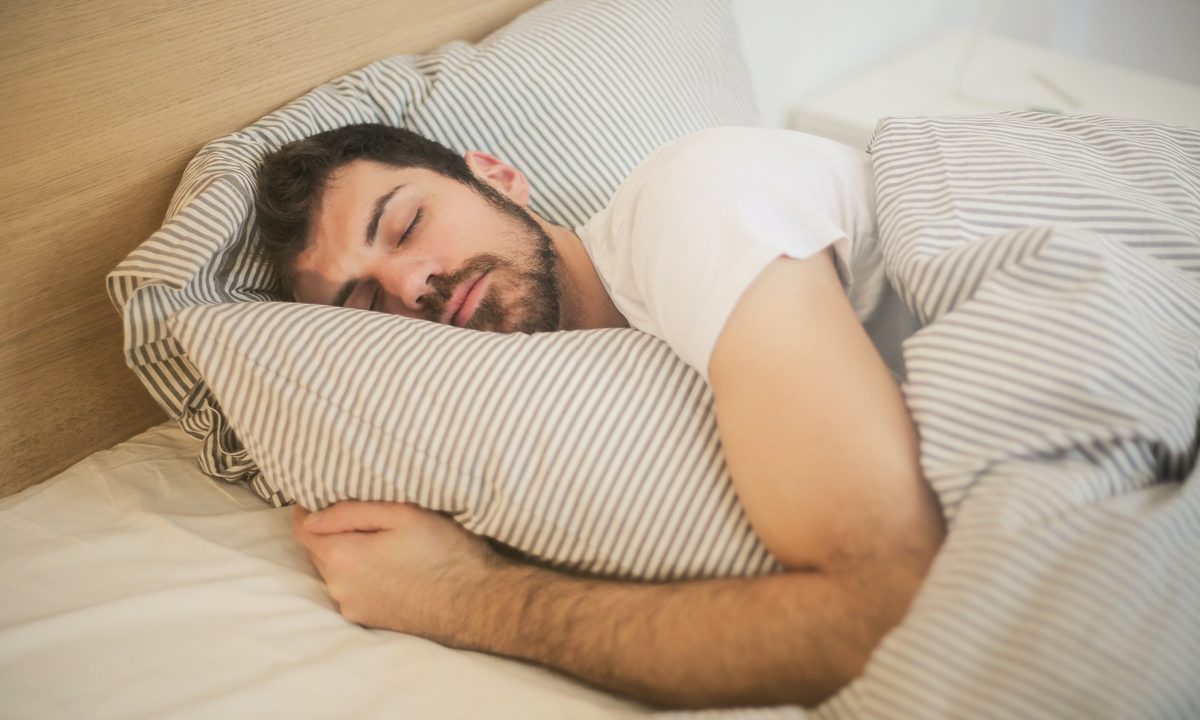Unfortunately, many of us struggle to rest. In nature, mammals slow down this time of year as they move into hibernation, cozy up, and recharge. Humans, on the other hand, seem to do the opposite in our “always-on” culture. But, if you’re reading this, you’re probably ready to improve your sleep habits. And, your space is the perfect place to start.
Here’s how to refresh your room and set the stage for your best night of sleep yet.
1. Choose Calming Colors
Studies have shown that certain colors can calm your nervous system while others create alertness and even raise your heart rate. Opt for warm neutrals, soft greens, or gentle blues, as these hues help cue your body to wind down. Avoid bright whites, reds, and high-contrast tones that feel stimulating.
Add in soothing touches like soft art, a snake plant, or a peace lily to purify the air and create a more serene vibe.
2. Declutter for Rest
Your bedroom should signal rest, not activity. Clear away piles of laundry, stash fitness gear, and keep your nightstand minimal. If possible, avoid working in your bedroom and keep electronics out entirely.
Make your bed every morning (yes, it really helps), and choose bedding that supports comfort and temperature control:
- For warm sleepers: Try linen or bamboo sheets that are breathable, moisture-wicking, and silky soft.
- For layering: Add a lightweight knit throw for easy temperature adjustment.
Sheets we love:
3. Soften Your Lighting
Swap out harsh overhead lights for amber-toned or smart bulbs that have a “wind-down” setting and mimic sunset. Aim for bulbs under 2700K for a warmer glow.
In the morning, let light wake you naturally with a sunrise alarm clock that is designed to simulate dawn and gently cue your circadian rhythm. These alarm clocks can also improve your mood since they aren’t jarring and they can improve your alertness.
Sunrise alarm clocks worth trying:
- Splurge: Hatch Restore 3 (~$200): combines sunrise simulation, meditations, and nature sounds.
- Affordable: Wrought Studio Sunrise Alarm Clock ($46.99, Wayfair): customizable colors and gentle wake sounds.
4. Block Out the Light
Because darkness is essential for deep sleep, invest in room-darkening or blackout curtains. If your space still isn’t pitch dark, a sleep mask can make all the difference.
Top sleep masks:
- Luxury: Nodpod Weighted Sleep Mask ($38)
- Mid-range: Kitsch Satin Pillow Eye Mask ($24)
- Budget: Alaska Bear Sleep Mask ($15)
5. Add Calming Scents and Sounds
A diffuser or linen spray with calming essential oils like lavender, sandalwood, or vetiver can trigger relaxation. Skip synthetic fragrances — they’re often more irritating than soothing.
Light a candle before bed, or mist your sheets with a gentle sleep blend to cue your senses that it’s time to rest.
A white noise machine or a fan is a great way to drown out disruptions. Soft, consistent sound signals to the brain that it is safe to sleep.
6. Build a Wind-Down Routine
Stack small, relaxing habits that tell your brain it’s bedtime:
- Read a book instead of scrolling.
- Stretch.
- Journal.
- Drink herbal tea.
- Follow your skincare routine.
- Listen to soft instrumental music or a guided meditation.
Try to go to bed and wake up at the same time every day, even on the weekends. This consistency helps your body sync with its natural rhythm.
7. Keep the Room Cool
Your ideal sleep temperature sits between 60–67°F. A cool room helps your body transition into deep sleep more easily.
If you run hot, cooling bedding or a smart mattress pad can make a huge difference.
Smart sleep upgrades:
- Premium: Eight Sleep Pod 3 Cover ($2,000+): tracks sleep stages, regulates temperature on each side of the bed, and integrates with smart home systems.
- Affordable alternative: Nitetronic G1 Smart Mattress Pad (~$999) — adjustable temperature zones at a lower cost.
- Value upgrade: Allswell 10” Hybrid Mattress ($314, Walmart) — great airflow and comfort without breaking the bank.
8. Power Down Early
Electronics are one of the biggest sleep disrupters. Power down your phone, tablet, and TV at least 1–2 hours before bed to reduce blue light exposure.
Avoid eating within 2–3 hours of bedtime, and limit alcohol as both can fragment deep sleep and affect recovery.
9. Mind your stimulants
If you find that you are still struggling, consider your caffeine intake. Caffeine’s half-life is up to 6 hours, so your 3 p.m. latte may still be in your system at bedtime. Other hidden culprits could be chocolate, green tea, and some pre-workout supplements. If after 20 minutes, you are still having trouble falling asleep, get up and do something calming until you’re sleepy again.
Final Thought
Creating a restful bedroom is about more than decor. It’s about signaling safety, comfort, and calm to your nervous system. With just a few thoughtful changes, your bedroom can become your favorite place to recharge, restore, and wake up ready for whatever the day brings.



